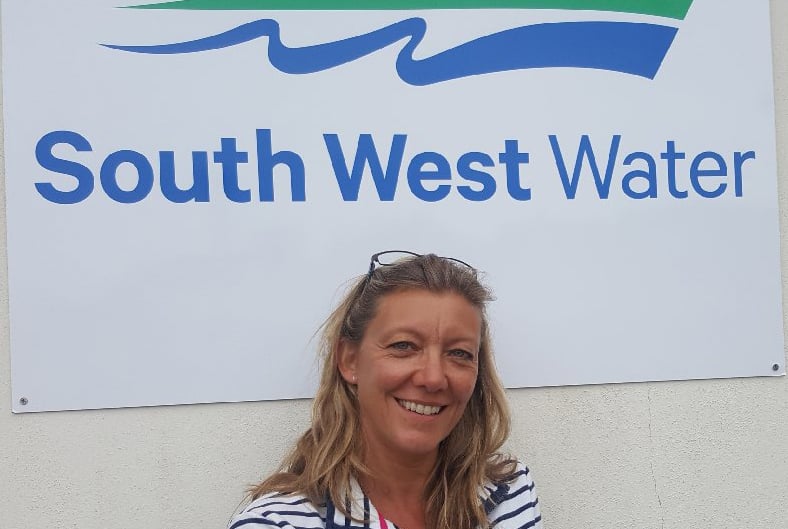The Scilly shrew and other terrestrial mammals on the Isles of Scilly
23rd September 2020
The Isles of Scilly are famous for the Scilly shrew. The Scilly shrew, a fascinating little mammal, is also known as the Lesser White-Toothed Shrew (Crocidura suaveolens). It is the only shrew found in the Isles of Scilly (and is only found here and on the Channel islands in GB). It was probably introduced by boats, from France or Northern Spain but there are archaeological remains of this shrew from the Bronze Age. This shrew is also distinctive because it is the only British shrew that does not have red-tipped teeth and is the most grey in colour. They are active day and night and may be heard, even if they are not seen. They are found on the larger islands and I’ve seen them on St Mary’s and Tresco. The Scilly shrew is an insectivore and key foods include sand hoppers found on the shore line and snails and slugs, so may be considered a gardeners friend. Many locals don’t like the shrews in their house and consider them intruding vermin. I was delighted to be given adult and baby Scilly shrew corpses on the last day of my week’s holiday in the Isles of Scilly, by South West Water's Isles of Scilly Manager Helen Richards. Thanks for organising this for my mammal collection Helen !
Mammals are a passion of mine – as are invasive species. Islands are particularly susceptible to invasive species and especially invasive mammals; the Isles of Scilly are no exception.
Invasive Non-Native Species (INNS) are plant or animals (terrestrial, fresh water or marine) that have been moved from their place of origin by humans, accidentally or intentionally, and have a negative impact on the environment, the economy and health. INNS can thrive as they have no natural predators, competitors or diseases to control them and they can have a greater impact on islands as island species can be small, localised or highly specialised and therefore more vulnerable. Invasive mammals can have a disproportionately large impact and there are three INNS mammals in the Isles of Scilly: brown rat, rabbit and hedgehog.
Brown rat (Rattus norvegicus)
The brown rat is one of the most successful mammals world-wide. It is widespread and abundant and has a close association with humans. Rats are recognised pests with negative economic impacts on food, crops and property. They also impact on human health and spread disease. They can have a negative impact on the environment and in 2013 the Isles of Scilly Seabird Recovery Project was established to protect shearwaters, petrels and puffins. Rats were successfully eradicated from St Agnes and Gugh and chicks were successfully recorded in 2014. We only saw a live rat once on this trip, on a small island, at high tide, on our nearest beach Porthloo.
Rabbit (Oryctolagus cuniculus)
Rabbits were introduced to GB by the Normans and have long been associated with islands, where they introduced as a food store; such islands were often called Coney Island – coney is an old name for rabbit. Rabbits can be considered agricultural or garden pests. They are found on a number of the islands, and although not often seen they leave visible droppings. We regularly saw rabbits in a couple of places on St Marys, but only 2 each time; I thought they would be more abundant. Rabbits are widespread in GB, however, they are declining significantly in numbers and are classified as ‘near threatened’ on the IUCN* red list.
Hedgehog (Erinaceus europaeus)
The hedgehog is probably GB’s most distinctive mammal. Although native to the mainland, hedgehogs are not native to the Isles of Scilly and are believed to have been introduced to St Mary’s in the 1980s. Many welcome this charismatic species, especially as a gardener’s friend eating slugs and snails. However, hedgehogs can pose a threat to beetles, shrews and ground nesting birds eating eggs and young chicks. A hedgehog control programme has been carried out in the Outer Hebrides on North Uist. Hedgehogs are only found on the one of the Isles of Scilly and do not appear to have a negative impact that warrants a control programme. We had a hedgehog visiting our garden and it is the first time my 10 year old daughter has seen a live one. Hedgehogs are considered ‘vulnerable’ on the IUCN red list and have suffered a 46% decline in the last 13 years in GB.
If you are visiting the South West Water team or go on holiday to the Isles of Scilly, please help track the status of mammals here, and send details of sightings (dead or alive) to the Environmental Records Centre of Cornwall and the Isles of Scilly - https://erccis.org.uk/share-sightings

* The International Union for Conservation of Nature (IUCN) is an independent, worldwide organisation that supports the integrity and diversity of nature.
For further information please contact:
Kate Hills
Biosecurity and Invasives Manager, SWW
Vice Chair, Mammal Society
August 2020
